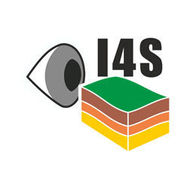Soil state variables in space and time: first steps towards linking proximal soil sensing and process modelling (2019.0)
Wallor E., Kersebaum K., Lorenz K., Gebbers R.
Precision Agriculture, 20 (2), 313-334
Abstract
The benefits of process-oriented modelling for management recommendations at the field scale are constrained by high spatial variability of soil properties and lack of dense information on soil types, variability and patterns. Geo-electrical mapping provides dense information about the soil, but sensor output is influenced by several factors. The agro-ecosystem model HERMES simulates nitrogen and water flow in the soil–plant–atmosphere system and was applied to 60 soil sampling points from a well-documented field with a wide range of soil texture in North Rhine-Westphalia, Germany. Validation of HERMES resulted in satisfactory root mean square errors for yield (0.62 t ha−1), water (36.08 mm) and nitrogen in the soil (74.93 kg ha−1) over the whole simulation period of 3 years. For the same field, values of electrical conductivity (ECa) ranged from 20 to 90 mS m−1. Clay and sand contents of three soil layers were highly correlated with the measured ECa. Derived regression models showed R2 values between 0.69 and 0.85, and cross-validation of the statistical equations resulted in a very good reflection of observed soil texture for two of the three soil layers. The subsequent calculation of soil texture at the mapping points of ECa produced an improved resolution of this key attribute to initialize model simulation. The temporal and spatial patterns derived from this work linking the ECa sensor to a process model allow the designation of sub-areas within the field according to the soil nitrogen and water supply. However, results could be improved by considering more than one up-scaled soil property for process-modelling.
